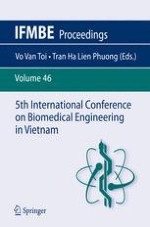2015 | OriginalPaper | Buchkapitel
Investigation the Stability of Oblique Fracture Fixation of Long Bone Using Different Screw Angle
verfasst von : Bich Nguyen, Trung Le, Ha Van Vo
Erschienen in: 5th International Conference on Biomedical Engineering in Vietnam
Aktivieren Sie unsere intelligente Suche, um passende Fachinhalte oder Patente zu finden.
Wählen Sie Textabschnitte aus um mit Künstlicher Intelligenz passenden Patente zu finden. powered by
Markieren Sie Textabschnitte, um KI-gestützt weitere passende Inhalte zu finden. powered by
Orthopedic surgery still hosts a number of known problems. Screw loosening and implant failure are common and pose a major issue for successful bone fracture fixation. Research shows that optimal screw fixation depends on the number and placement of screws or using bone cement as an adjunct. There is a lack of focus and attention to the biomechanical effects of screw angle placement into the bone. The purpose of this study is to investigate the biomechanical effects of placing screws at different angles with respect to the fracture plane on the stability of the fixation of oblique fractures of long bone. The 45° angle oblique fracture was investigated. Twenty one porcine femurs were harvested, cleaned, measured for dimensions, and randomly divided into three groups of seven (N=7 per group). The fracture model was 1 mm oblique osteonomy at midshaft. The method was screw fixation only using 2 cortical screws at different angles. The three different screw angle fixations of interest were perpendicular (45° group), 45° angle (T group) and 70° angle (70° group) with respect to the fracture plane. Compression testing to failure was performed at a constant rate of 3 mm/min using a servo-hydraulic MTS 858 Bionix testing machine. The load and displacement were collected through LabVIEW then being processed to obtain average maximum load and stresses. One-way unstacked ANOVA comparison test was conducted to determine the significant difference between the group data. The T group demonstrated superiority in both maximum compressive load and maximum normal stress as compared to the other groups. Statistical analysis shows a significant different between the T group and 45° group (p < 0.05) but no significant different between the 90° group and 70° group for the maximum normal stress.
